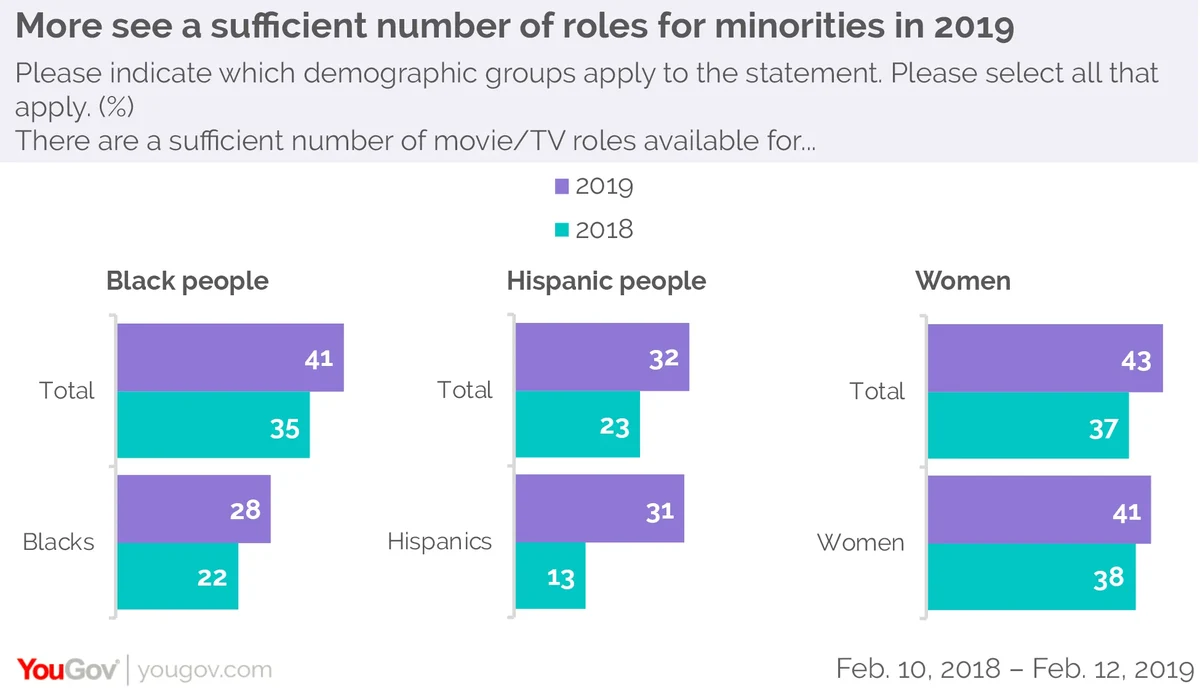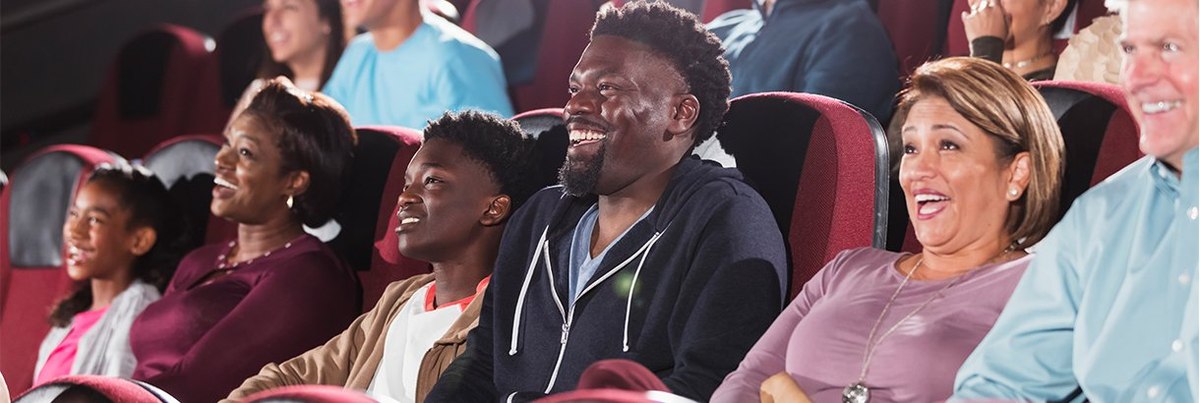But the quality of these roles – now increasingly seen as stereotypical – is still in question
For the past four years, the Twitter tag #OscarsSoWhite buzzed around the awards ceremony to call attention to the lack of diversity in nominating predominately white actors, actresses, and directors. The Academy of Motion Pictures and Sciences has certainly taken notice and as this year’s field was one of the most diverse in years, that Twitter tag appears to have taken a hiatus.
In order for minorities to even be nominated, however, Hollywood executives must prioritize diversity and inclusion while writing or casting movies. This ensures there will be a sufficient number of roles available to the underrepresented – something minority groups are more likely to say is happening this year compared to last – though the quality of those roles still remains in doubt.
More believe there are an adequate number of roles for minorities in 2019...
A recent YouGov Omnibus survey finds that, overall, the general public this year is more likely to agree that there are a sufficient number of entertainment roles for blacks, Hispanics, Asians, and women than it said there were in 2018. What is particularly notable is that Americans in each respective group are also more likely to agree that their particular demographic groups received a sufficient number of roles this year than the last.
For example, the number of black Americans who say there are a sufficient number of roles for black people in entertainment increased by 6 percentage points (from 22% in 2018 to 28% in 2019). The change is even more pronounced among Hispanics – 13% said there were a sufficient number of roles for Hispanic people in 2018 but that number increases to 31% in 2019.
But those roles are increasingly seen as stereotypical
Despite this increased optimism for the quantity of roles offered to minority groups this year, the underrepresented question the quality of those roles and are more likely to say this year that those roles are portrayed as stereotypes. This finding is particularly true when black Americans and Hispanic Americans are asked how their respective demographic groups are portrayed.
Among black Americans, 61% this year believe the roles portrayed by black people are often stereotypes – up by 8 percentage points from 2018. Among Hispanic Americans, 38% this year think the roles portrayed by Hispanic people are often stereotypes – up by 16 percentage points from 2018. The general public also believes the same applies to roles portrayed by Asian people (34% in 2019 vs. 28% in 2018).
And while there were no significant changes among public perception of how white people are portrayed in film and TV (31% in 2019 vs. 28% in 2018), white Americans are more likely to believe that roles portrayed by whites are often stereotypes this year (33%) than the last (28%).
How people see characters they identify with demographically
When asked how people viewed characters like themselves on screen, there are a few notable changes in perception. Black Americans were more likely to say this year that characters they identify with often have very little dialogue (55% in 2019 vs. 49% in 2018), are often portrayed as sidekicks (61% in 2019 vs. 49% in 2018), get killed off more or earlier than other characters (71% in 2019 vs. 49% in 2018), and are cast for no other reason than to add diversity (67% in 2019 vs. 59% in 2018).
Hispanic views on the same topics remain relatively unchanged with the exception of two instances. This year, Hispanics were less likely to view Hispanic characters as sidekicks (42% in 2019 vs. 49% in 2018). But they were also less likely to view characters like them as figures with authority (30% in 2019 vs. 34% in 2018).
One other identity group reported changes in the way people like them are portrayed: women. When asked if characters like them are often one-dimensional or stereotypical, 49% of women say that they are – up from 44% who said the same in 2018.
One potential solution to these problems, according to YouGov data, is to hire directors who have similar life experiences as the characters they want to portray. Majorities agree that this would certainly help, and although consensus on this remains unchanged compared to last year, women are 5 percentage points more likely to agree with the statement this year (58% in 2019 vs. 53% in 2018).
Minorities and women are increasingly seeing more role models they identify with on screen
The data suggests there is reason to celebrate diversity and inclusion in 2019. This year, minority groups and women are more likely to find good role models in characters they identify with on screen. And even among whites and men, there is an uptick in positive perception of white and male role models.
Read more results from the 2019 and 2018 surveys here
Learn more about YouGov Omnibus
Photo: Getty











